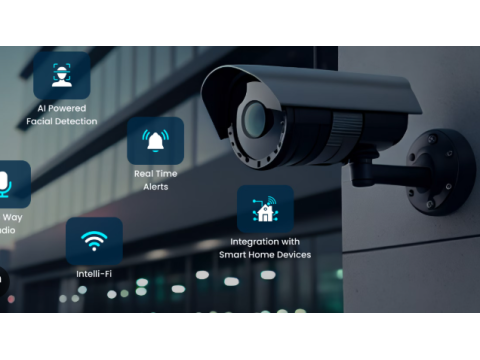How Surveillance Cameras Work: Key Principles
Modern surveillance systems are built on a few fundamental components:
- Lens (objective): Captures the image.
- Sensor (matrix): Converts optical signals into electrical signals.
- Signal Processor: Transforms raw data into usable video output.
Principles of Camera Operation
Image Formation
Cameras use a lens to focus light from objects at varying distances. A key factor is the depth of field, which determines how much of the scene remains sharp without refocusing. For optimal sharpness:
- Objects beyond 100x the focal length generally appear in focus.
Signal Output
- Analog Cameras: Output video signals in frequencies (~6 MHz) carrying synchronized frames and brightness data.
- IP Cameras: Transmit digitized video data (binary) over networks, with volume depending on resolution, compression, and frame rate.
System-Wide Operation
A typical surveillance system includes:
Signal Transmission:
- Wired: Using coaxial or twisted-pair cables.
- Wireless: Wi-Fi or 3G/4G connections.
- Optical Fiber: For long-range or high-bandwidth applications.
Signal Processing:
- Handled by DVRs (Digital Video Recorders) for analog systems or NVRs (Network Video Recorders) for IP systems.
- Monitors display the processed output.
Common Issues and Troubleshooting
Signs of Malfunction
No Image on the Monitor:
Possible causes include:- Faulty camera or connection.
- Insufficient power supply.
Testing for Faulty Cameras:
- Connect directly to a recorder or test monitor.
- Use a multimeter to check for voltage drops or continuity in wires.
Wi-Fi Cameras:
- Ensure placement near routers or check settings for misconfigurations.
How to Identify a Decoy Camera
Fake Indicators:
- Blinking LEDs: Real cameras rarely feature these.
- Suspiciously Simple Construction: Decoys are often hollow shells.
Infrared LEDs:
- Genuine cameras emit faint red light from IR LEDs in low light.
- Most decoys lack this feature.
Placement:
- Real cameras are discreetly installed to avoid vandalism.
- Decoys are often overly prominent to deter crime.
Connection Details:
- Real cameras include cables leading to junction boxes.
- Decoys often omit this critical infrastructure.
Conclusion
Understanding how surveillance cameras work helps in both selecting the right equipment and identifying malfunctions or decoys. Whether setting up a security system or troubleshooting issues, knowing these principles ensures better control and decision-making.

